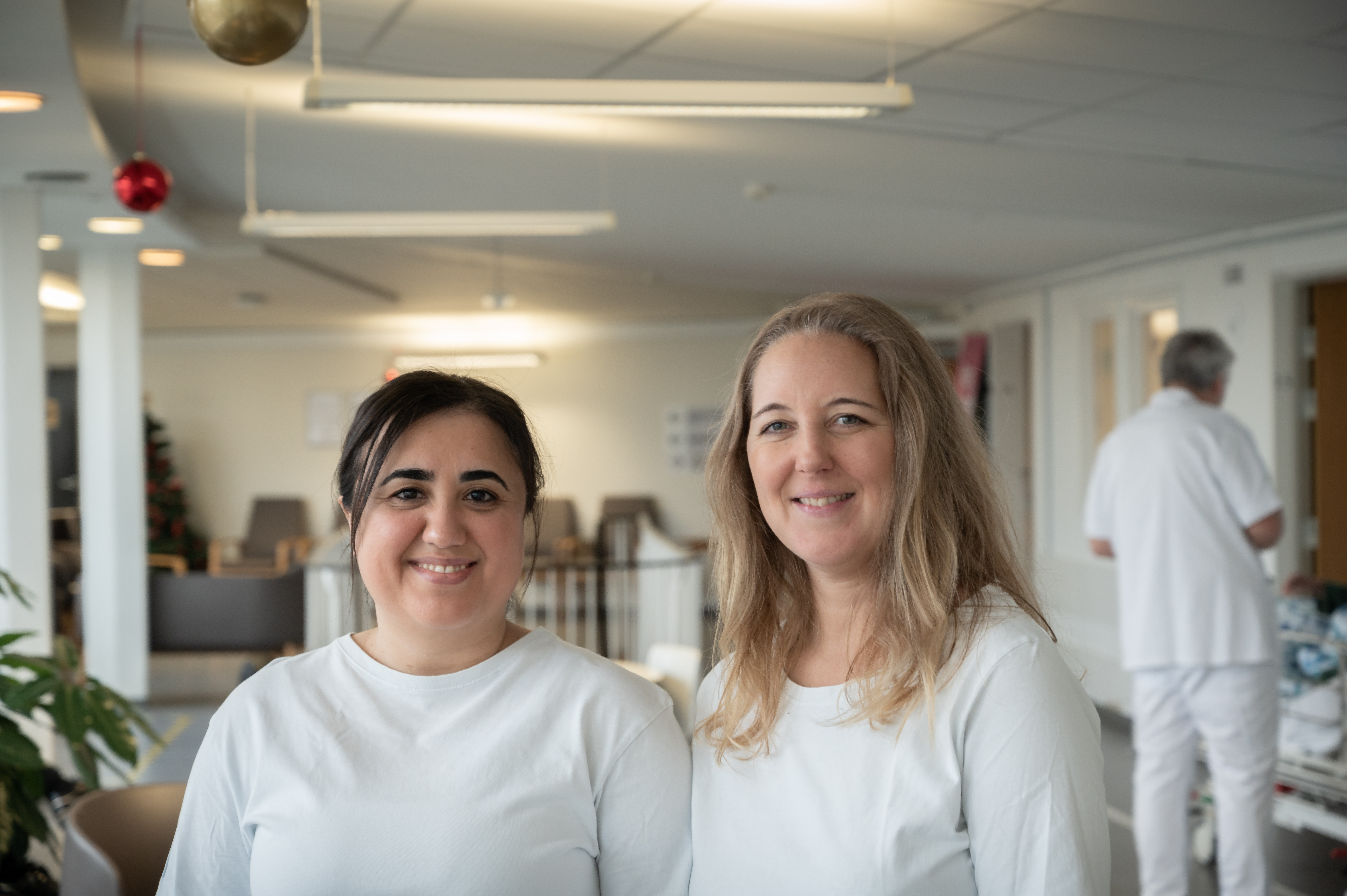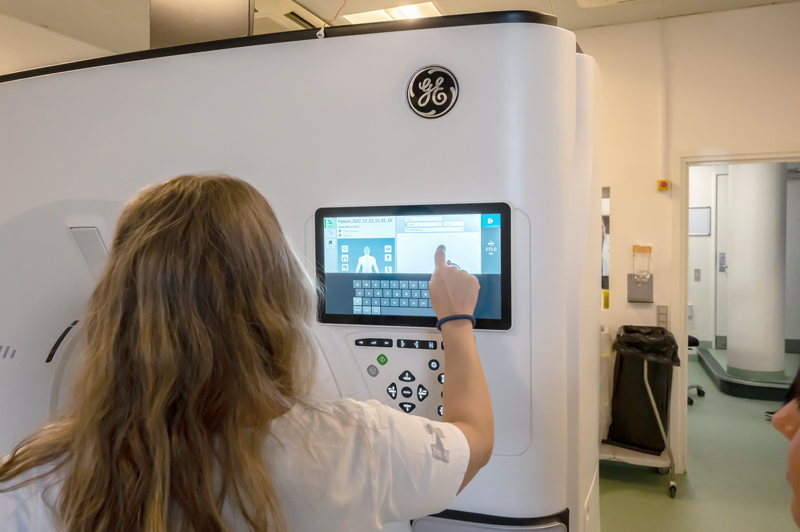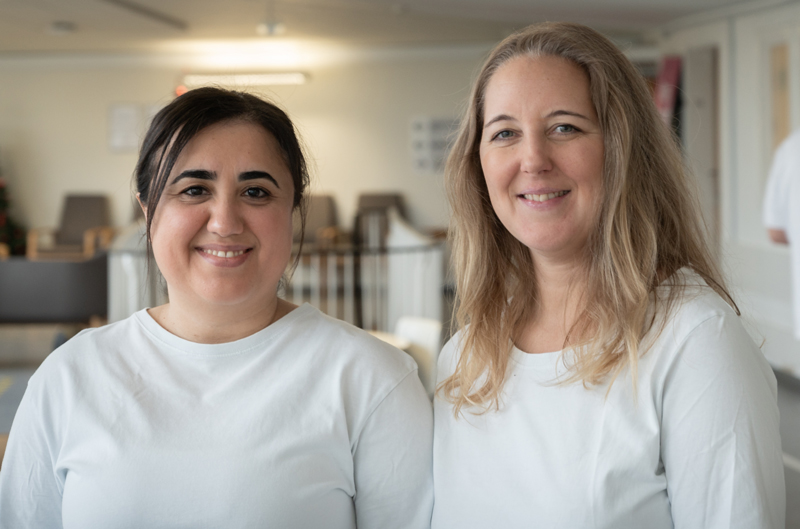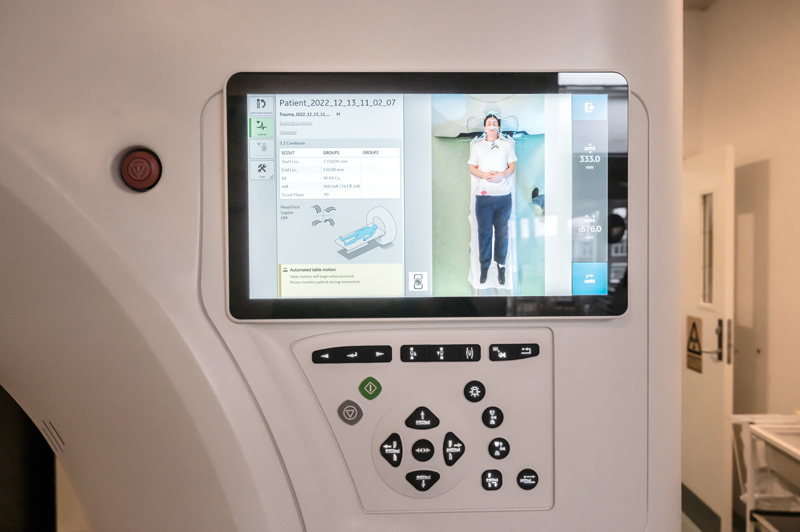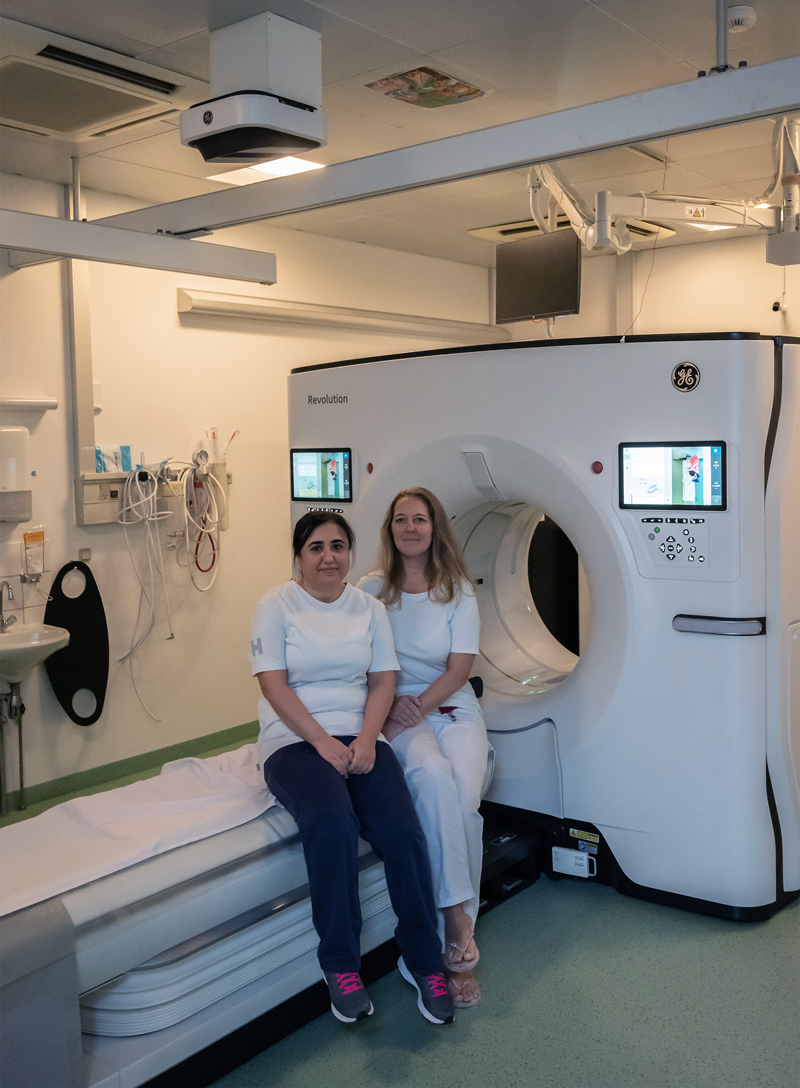“The CT scanner measures and ISO centers itself. If we want to alter the coverage, we just need to drag some lines on the touch screen. It doesn’t get much easier than this.”
At Rigshospitalet in Glostrup, Denmark, a new CT scanner, Revolution™ Apex Select, from GE HealthCare with integrated artificial intelligence and workflow automation has helped to ease the radiographers’ routine work tasks and made it easier to maintain good patient centering, which is important for the automatic exposure control to function optimally, resulting in good image quality and dose optimization.
“It’s fair to say that our new CT scanner has taken taken some of our work – partly by helping to ensure an optimal centering of the patient, and also because it’s good at suggesting relevant scanning protocols for our work. It’s a good tool that adds some weight to our expertise, and we’re very satisfied with it,” says Maria Bjerrum Holm, radiographer at Rigshospitalet in Glostrup.
This is the unanimous assessment from both Esra Kara and Maria Bjerrum Holm, radiographers in the hospital’s X-ray and Scanning department after the first few months’ experiences of using GE HealthCare’s CT-scanner, Revolution™ Apex Select with Effortless Workflow, which was installed in fall 2022.
“I don’t think I could have done it better myself. It also helps to make the centering more consistent, which makes it easier to compare several examinations of the same patient.”
Maria Bjerrum Holm, Radiographer, X-Ray and Scanning, Rigshospitalet in Glostrup, Denmark
“The machine is entirely new to us, but it’s not difficult to figure out. As superusers, we were given comprehensive training by a specialist from GE HealthCare, after which we have trained 15 radiographers ourselves on how to use the scanner. The feedback generally has been that operating the machine is very intuitive,” says Esra Kara.
The combination of easy-to-access operation, automated work tasks and the integrated artificial intelligence of the auto positioning tool has helped to make the overall workflow considerably more effective. GE HealthCare has calculated that a radiographer only needs to click through half1 as many options to perform an average scanning compared to previously, which takes them around 20% less time to complete1.
"The machine is entirely new to us, but it’s not difficult to figure out. As superusers, we were given comprehensive training by a specialist from GE HealthCare, after which we have trained 15 radiographers ourselves on how to use the scanner. The feedback generally has been that operating the machine is very intuitive.”
Esra Kara, Radiographer, X-Ray and Scanning, Rigshospitalet in Glostrup, Denmark
Radiographers Esra Kara and Maria Bjerrum Holm from Rigshospitalet in Glostrup, Denmark.
AI Based Auto-Positioning – Correct Centering is Crucial
A 3D Camera positioned above the CT Table measures in real time whether the patient is positioned and centered correctly – depending on whether it is the patient’s head, spine, lungs, abdomen or pelvic region that is being scanned. Glostrup has upwards of 50 different standard protocols for the radiographer to choose between, depending on what is being scanned – and what the doctors wish to see – and which can then be adjusted as needed.
“A correct ISO centering – that is, the positioning of the patient at the isocenter, from where the CT rays meet both vertically and horizontally – is crucial in order to get the high-quality scanner
images we would like. Whereas previously it was entirely up to the individual radiographer, the scanner can now measure and determine the ISO center itself using AI Algorithms. If we want to scan a different section or a bigger area, we simply drag some lines on the touch screen. It doesn’t get much easier than this.”
“It gives us peace of mind. Naturally, we still need to check the centering, but in the first months we’ve been using it the Apex Select has not centered incorrectly, and I don’t think I could have done it better myself. It also helps to make the centering more consistent, which makes it easier to compare several examinations of the same patient,” says Maria Bjerrum Holm.
“Whereas previously it was entirely up to the individual radiographer, the scanner can now measure and determine the ISO center itself. If we want to scan a different section or a bigger area, we simply drag some lines on the touch screen.”
Esra Kara, Radiographer, X-Ray and Scanning, Rigshospitalet in Glostrup, Denmark
Designated duty scanner
The X-ray and Scanning department at Rigshospitalet in Glostrup will normally have around 20 outpatient scans booked over the course of a day, but just as many acute scans can often show up on top of this number, and it’s not unusual for the scanner to be used 40 times in one 24-hour period.
“We’ve designated Revolution Apex Select as our duty scanner, which means it runs more or less 24/7. This is because it is hands-down the best of our machines for head scans, and we scan really many heads! Of course, we also scan a good number of lungs, backs, areas of the abdominal region and so on, but the neurological head scans, where we look for bleeding and clots, are what take up most of our time,” says Esra Kara.
AI-based Auto Positioning and TrueFidelityTM Image Reconstruction – Improves good Radiation Optimization
"When it comes to the question of ensuring good radiation optimization – that is, minimizing the levels of radiation that the patients are exposed to during a scan – then the integrated artificial intelligence in Revolution Apex Select has proved to be extremely valuable,” Esra Kara explains:
“Radiation optimization is a huge deal in our sector, and something we prioritize extremely highly. Here, too, the correct positioning and ISO centering of the patient is critical if we are to achieve the best image quality without using an unnecessary level of radiation.
”Typically, the less radiation you use for the scan itself, the grainier the images will be. Here, however, the deep learning image reconstruction, TrueFidelity is able to calculate its way to better, clearer images by reducing the image noise – and, it’s worth nothing, without removing any of the desired information in the image.
“The results are surprisingly good, and the doctors are very satisfied with the scans which we can produce with the help of AI. On other hand, it’s also a balancing act. We can choose between three different levels or strengths of TrueFidelity, AI deep leaning image reconstruction algorithm, and our task is always to ensure that we don’t lose any of the relevant information in the images. Ultimately, it’s up to the doctors to decide, depending on what they are looking for in the scans,” concludes Maria Bjerrum Holm.
Radiographers Esra Kara and Maria Bjerrum Holm at the Department of X-ray and Scanning at Rigshospitalet in Glostrup with the Revolution Apex Select CT scanner, which was installed in the autumn of 2022. On the scanner, they use, among other things, Effortless Workflow, which helps to make the overall workflow significantly more efficient with automated steps for e.g. patient positioning.
| Auto Prescription To achieve the best quality scans with accurate patient position and optimized scan parameter, the scanner is equipped with many features to help achieve this. The scanning parameters are optimized by using Auto Prescription within the many protocols used at Glostrup on the Revolution Apex Select. Auto Prescription allows protocols to be adapted automatically for body habitus and this in turn means consistent optimization of the radiation dose delivered to the best and the image quality achieved3. |
Learn more about Effortless Workflow.
Learn more about the Revolution Apex platform.
Rigshospitalet in Glostrup do not have any contractual relationship beyond the fact of being end user of a GE HealthCare medical device.
References
1. Compared with GE legacy scanner. The required clicks are defined as clicks required to execute a scan from selecting a new patient until start scan. All associated clicks for and in clinical practice, number of the required clicks may vary depending on the circumstances, including but not limited to, the clinical task, exam type, clinical practice, and image reconstruction technique. Revolution Ascend Customer PresentationJB16626XX.
2. The data was based on comparison between GE’s legacy products (16ch and 64ch scanner) and Revolution Ascend in the three institutions using a pilot product, and selected routine head and body. The data set of this comparison was 838 exams for legacy products and 1387 exams for Revolution Ascend. The time saving value may not be effective for all institutions depending on the clinical practice. Definition of entire exam
time is from “Open new patient” to “Last primary recon completed” for Revolution Ascend and “Close exam” for legacy products. Revolution Ascend Customer Presentation JB16626XX.
3. Auto Prescription, Technical White paper. June 2021. JB15862XX

